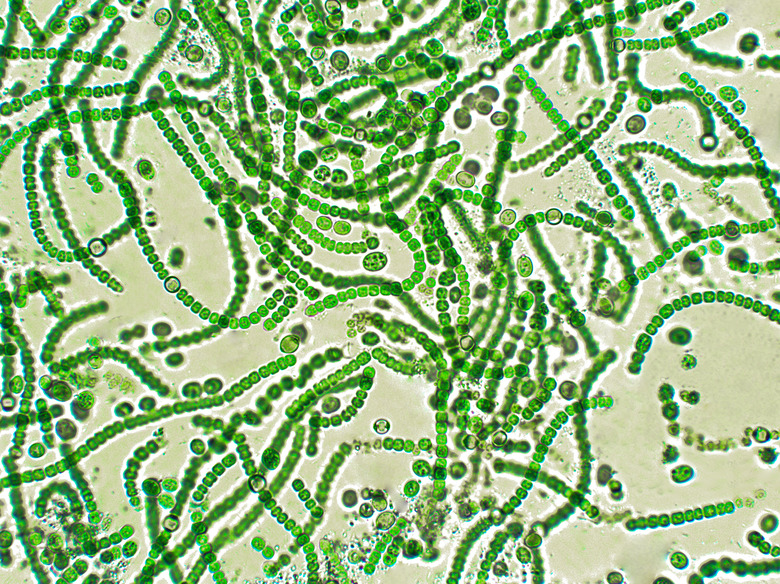Smallest Living Creatures In The Ocean
Earth's oceans are home to a diverse group of living things. One of them, the blue whale, is the largest animal ever to have lived. On the other side of the scale, the ocean is home to minute living beings. The varying sizes of the oceans' denizens reflects the results of millions of years of evolution shaping them to fit their ecological niche.
The Smallest of the Small: Marine Viruses
The Smallest of the Small: Marine Viruses
Just as on dry land, the oceans are full of millions of viruses, by far the tiniest form of life. The smallest are about 40 nanometers in diameter. To put that into perspective, if you lined these marine viruses up end to end alongside a ruler, you would have to lay down 635,000 of them before hitting the 1-inch mark. Even the largest marine viruses are only about 400 nanometers.
Marine Bacteria
Marine Bacteria
Although some marine viruses infect animals such as whales and fish, marine bacteria — the second-smallest living things in the ocean — are the prey of most. Many are around 1,000 nanometers (1 micrometer) long, dwarfing marine viruses but still invisible to the naked eye. You would need 25,400 marine bacteria lined up to hit your ruler's inch mark.
The Smallest Marine Plants
The Smallest Marine Plants
The smallest living things from the plant kingdom living in our oceans are single-celled green algae. These tiny cousins of the redwood tree can be measured at 5 micrometers or less, about five times larger than marine bacteria but still quite small. You would have to line up 5,080 of these little plants to reach 1 inch.
The Smallest Shark
The Smallest Shark
Although one might think of all sharks as fearsome beasts, there is nothing to fear from the smallest shark in the ocean, the deep-dwelling dwarf lantern shark. The very largest specimen ever measured was only 20 centimeters long, a little less than 8 inches. That makes the dwarf lantern shark a giant compared with marine viruses, bacteria and green algae, but a mere speck compared with the ocean's largest shark (and fish), the 40-foot-long whale shark.
Cite This Article
MLA
Murray, Ann. "Smallest Living Creatures In The Ocean" sciencing.com, https://www.sciencing.com/smallest-living-creatures-ocean-8448158/. 22 November 2019.
APA
Murray, Ann. (2019, November 22). Smallest Living Creatures In The Ocean. sciencing.com. Retrieved from https://www.sciencing.com/smallest-living-creatures-ocean-8448158/
Chicago
Murray, Ann. Smallest Living Creatures In The Ocean last modified March 24, 2022. https://www.sciencing.com/smallest-living-creatures-ocean-8448158/
